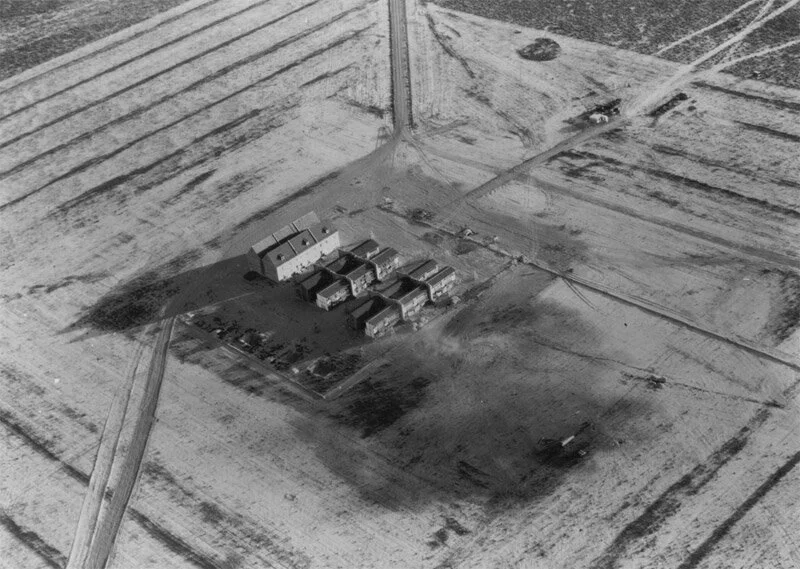This Site Will Remain Dangerous
Published by Monument Lab | May 17, 2021
From the essay:
In Euro-American colonizers’ eyes, deserts categorically served their objectives: they stood as perpetually uninhabited landscapes, continually open to extrinsic speculation. Beliefs of this ilk embedded themselves in white patriarchal American discourses, producing popular notions of deserts as topographies to be “discovered” and instrumentalized on the path to modernist progress. In the words of art historian Lucy Lippard, they were “the geography of revelation—simultaneously empty and full.”[1] From the early twentieth century onward, these mythologies propagated through wartime nationalisms, animating technologically driven forms of deserts’ material and geopolitical exploitation in an increasingly globalized political order. Military bases and training centers, uranium mining sites, as well as nuclear and biochemical weapons research, testing, and waste storage areas began extracting from desert lands across the American West. As Cold War tensions grew, logics of American exceptionalism that originally drove settler colonialist agendas extended themselves to arms race fervor: the proliferation of militarized nuclear technologies became necessary to reinforce narratives of American abundance and political ascendancy.[2]
Dugway Proving Grounds’ founding in 1942 is paradigmatic of these cultures of violence. In the wake of the attack on Pearl Harbor in December 1941, the U.S. Chemical Warfare Service (CWS) sought to inaugurate new chemical weapons testing and storage facilities.[3] The arid, elevated altitudes of western Utah attracted the CWS, and over several months, DPG was built on a desolate tract of desert—a terrain “with elbow room”—about eighty-five miles southwest of Salt Lake City.[4] Colonial-era mythologies provided potent historical blueprints for this appropriation: just as Euro-American settlers saw opportunities for amassing and leveraging resources by co-opting desert vistas as property, so too did the CWS in 1942.
Highly dangerous, experimental, speculative, and purportedly “precautionary” operations conducted at and around DPG have perpetuated colonial legacies by repeatedly wagering and threatening non-white populations’ livelihoods, protection, and preservation—all in favor of protecting and preserving state and military claims to power. This is particularly true of Indigenous populations, many of whom continue to reside on reservation lands around DPG, as well as Japanese and Japanese American populations, who were subject to extensive federal campaigns of xenophobic violence and displacement during the second World War.
[1] Lucy R. Lippard, Overlay: Contemporary Art and the Art of Prehistory (New York: The New Press, 1983), 106.
[2] Hugh Gusterson explicates this phenomenon from an anthropological research perspective in his essay, “Endless Escalation: The Cold War as a Postmodern Narrative,” Tikkun 6 (Sept-Oct 1991).
[3] Leonard J. Arrington and Thomas G. Alexander, “Sentinels on the Desert: The Dugway Proving Ground (1942-1963) and Deseret Chemical Depot (1942-1955),” Utah Historical Quarterly 32, No. 1 (Winter 1964): 32-33.
[4] Ibid.
Aerial View of Japanese and German Village at Dugway Proving Grounds (DPG), Utah, 1943
Photo: U.S. Army
